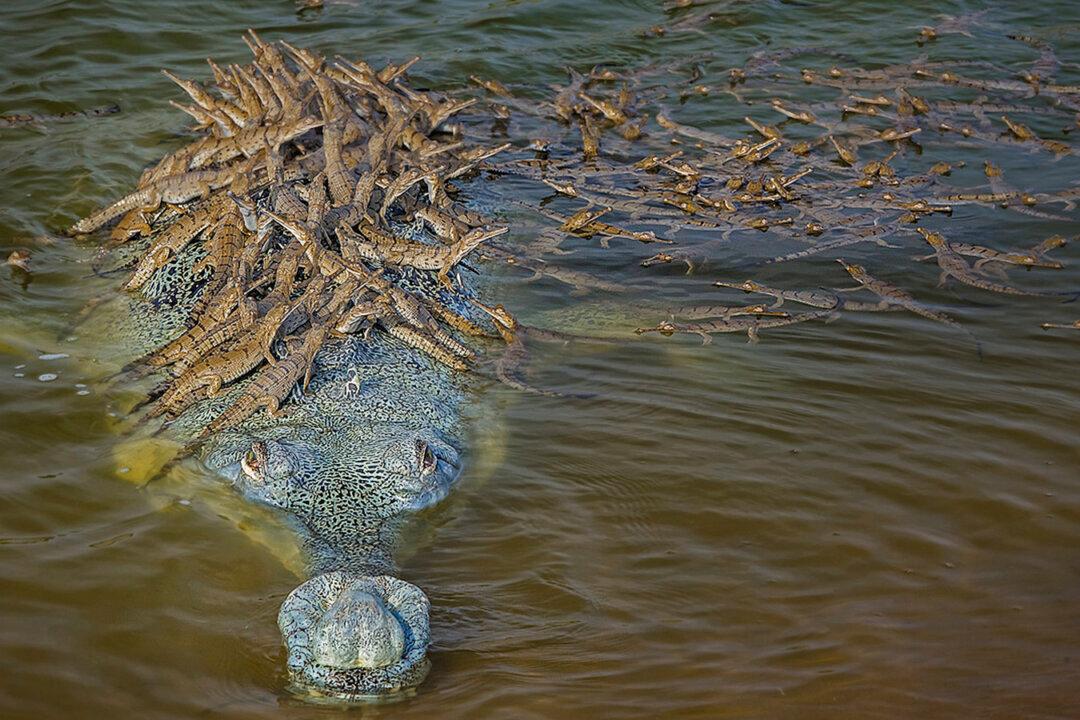In this startling photograph, a father crocodile is swimming in a river in India, and he is hauling something extraordinary on his back.
His cargo? Baby crocodiles, dozens of them. Look closely. Can you count them all?


In this startling photograph, a father crocodile is swimming in a river in India, and he is hauling something extraordinary on his back.
His cargo? Baby crocodiles, dozens of them. Look closely. Can you count them all?